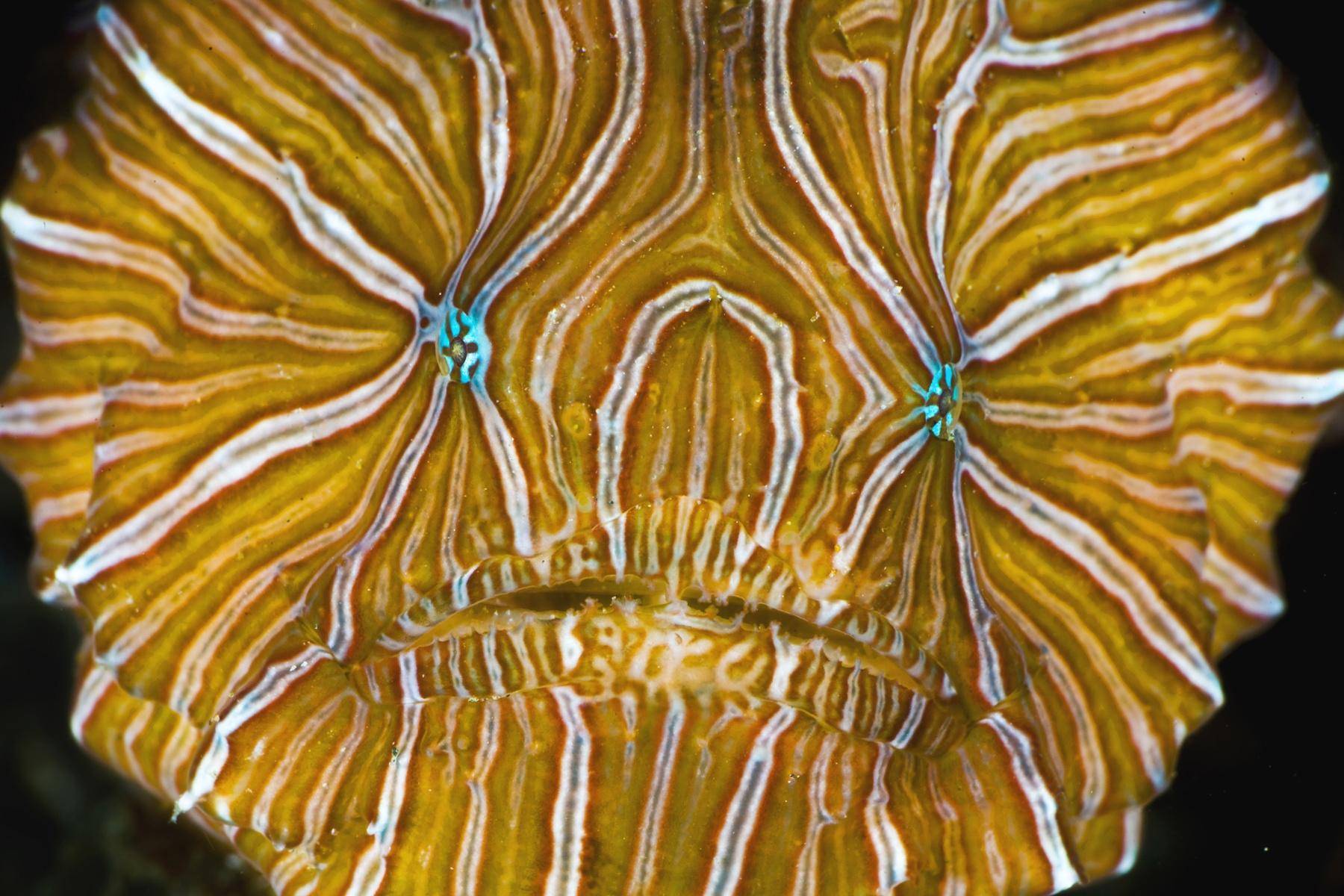Psychedelic frogfish
(Histiophryne psychedelica)

Description
The psychedelic frogfish (Histiophryne psychedelica) is a yellow-brown or peach colored frogfish named for its pink and white stripes arranged in a fingerprint pattern.The fish is from waters near Ambon Island and Bali,Indonesia.The psychedelic frogfish was first described in 2009 by Pietsch,Arnold,and Hall in the scientific journal Copeia,where they described it as having "a remarkable pigment pattern of white swirling stripes",hence their use of the term psychedelic.The psychedelic frogfish has been known to reach a length of 15 centimetres (5.9 in).The skin of the psychedelic frogfish is flabby and fleshy,like other frogfishes.As a member of the order Lophiiformes,it has no scales.The skin covers the dorsal and ventral fins of the fish,which aid in camouflaging the fish.The skin may be covered in protective mucus.The psychedelic frogfish is different from many other anglerfishes in that it has a tiny luring appendage on its forehead.It has a relatively flat face with a mouth smaller than that of most anglerfishes.The coloring of the skin is a pattern of yellowish brown or peach colored stripes.This pattern covers the entire fish,including its fins,except for the hidden skin that is exposed when the lips are stretched forward,which is pale in color.At the margins,the skin can appear to be turquoise,although the exact nature of this coloration is unclear.Unlike some frogfishes,the psychedelic frogfish's color never changes,even if the habitat changes,and its offspring maintain that color as well.The fingerprint pattern,like the stripes on a zebra or the spots on a humpback whale's tail,is unique to each individual.This allows researchers to easily track multiple psychedelic frogfish in the wild and still identify them from any angle.The face of the psychedelic frogfish is flattened;the cheeks and chin of the fish are extended laterally,much like the sides of a collapsible paper orb.The fish is able to both expand its head and extend its mouth forward,thus expanding the head and giving it a more elongated shape more often seen in large fish.The fish employs this behavior periodically when not feeding,as though yawning.
Taxonomic tree:







